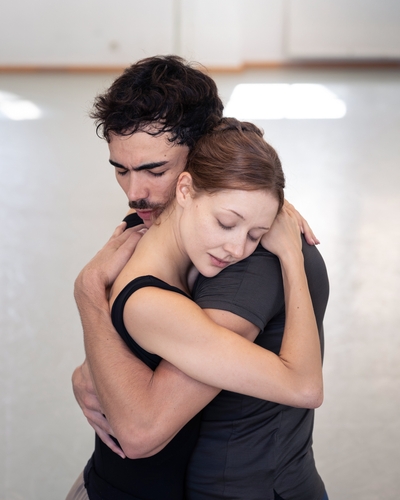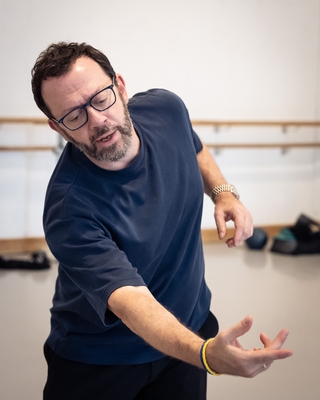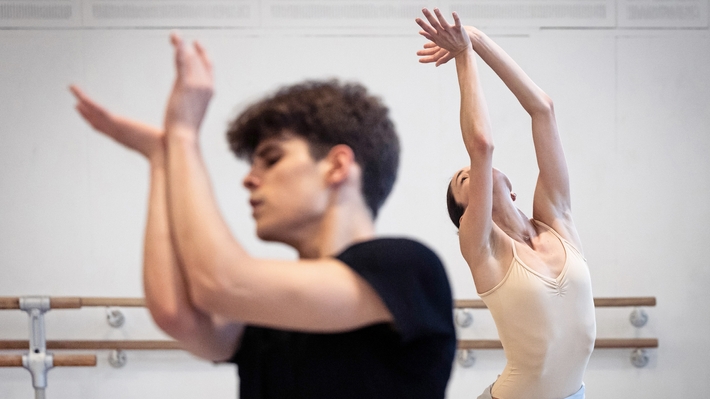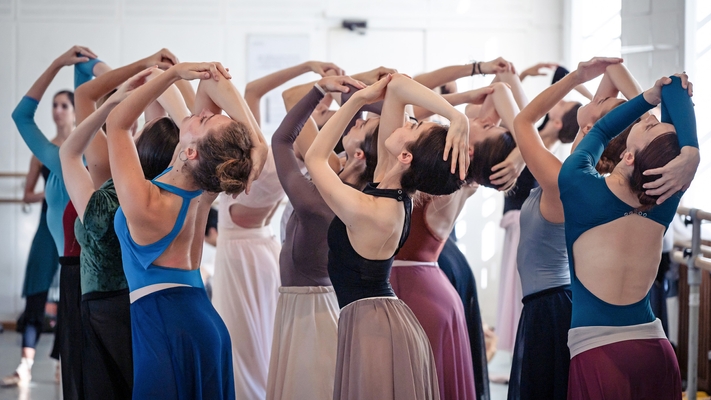Timeless Beauty & Human Strength
News |
The Vienna State Ballet celebrates the first premiere of the season with Alexei Ratmansky's Kallirhoe - an epic love drama from antiquity set to the music of Aram Khachaturian. In the European premiere of the narrative ballet, the two newly engaged principal dancers Madison Young and Victor Caixeta make their house and role debuts respectively.
Kallirhoe... a name that initially puzzles most people. How do you pronounce it, and who or what is behind it? These are frequently asked questions that arise when it comes to categorizing the first premiere of the Vienna State Ballet under the new director Alessandra Ferri. The title refers not only to the name of its heroine, but also to the oldest completely preserved ancient novel, which serves choreographer Alexei Ratmansky as the basis for his extraordinary narrative ballet.
Kallirhoe was written - probably in the 1st century AD - by Chariton of Aphrodisias, whose work decisively shaped, if not invented, the genre of the Greek romance novel and also provided important impulses for the emergence of European narrative literature.
Kallirhoe occupies a special position on several levels: On the one hand, the novel combines tragedy and entertainment with themes that were relevant to the Greco-Roman readership. Secondly, Chariton refers to historical events, thus maintaining a certain proximity to historiography (for example, the Great King in the novel is reminiscent of Achaemenid kings such as Artaxerxes II) and does so in a charming, flowing narrative style. Reading the novel, you quickly sense that it is intended to entertain, but at the same time it assumes that its audience has some knowledge of history, mythology and society.
But what is Kallirhoe about? The book, whose plot unfolds in the era of Alexander the Great, tells the love story of Kallirhoe, a beautiful young woman of noble birth, and Chaireas, a no less beautiful man. The two fall in love at first sight and celebrate their wedding - after the quarrel between their formerly hostile fathers is settled. However, Kallirhoe's beauty is not of "earthly, but divine nature", so that the young couple's happiness is ruined by the intrigues spun by her envious suitors. What follows are supposed deaths, imprisonments, journeys between Syracuse, Asia Minor and the Persian Empire, adventures, wars and all kinds of major and minor disputes and dangers before the two find each other again in the end.
"1) How Kallirhoe married Chaireas, the most beautiful woman, the most beautiful man - Aphrodite arranged the marriage - how Chaireas, in love, beat her out of jealousy and she then seemed dead, how she was buried with great pomp, then regained consciousness in the burial chamber and grave robbers took her away from Sicily at night, to Ionia and sold her to Dionysius, the love of Dionysius, Kallirhoe's loyalty to Chaireas, the necessity of marriage because she was pregnant, Theron's confession, Chaireas' journey to look for his wife, his capture and sale to Caria together with his friend Polycharmos,
2) and how Mithridates discovered Chaireas when he was about to die and how he tried to reunite the two lovers, but Dionysius found out about the affair through the letters and slandered Mithridates to Pharnakes, who then also slandered him to the Great King, and the Great King summoned them both to court - all of this is described in the foregoing."
Kallirhoe and Chaireas' journey is so complex, takes them through numerous places and countries and is full of both unfortunate and fortunate, divinely intended "coincidences", that even the author Chariton summarizes what has been experienced so far in the fifth of a total of eight books in order to prepare readers for the no less adventurous finale, which of course comes with a happy ending.
"What the harsh reality would hardly have allowed, the ancient novelist grants with a light hand by creating a not slightly illusionistic contrast to the world of hard facts", according to the blurb of a German edition of the work. Kallirhoe combines love, friendship, violence and adventure and is as improbable as it is comforting. Even 2000 years ago, people knew what we still never tire of reading today: that love outlasts everything.
Alexei Ratmansky also found the key to the work in the emotions that still drive people. For him, not only love, but above all the ability to forgive is a decisive approach to the story of Kallirhoe: "Despite all the violence to which Kallirhoe is exposed, she makes her own decisions and in the end is faced with the question of whether she forgives the man she loves and who has done terrible things to her - and she does," describes the choreographer.
"My aim was not to create a museum reconstruction, but a lively, exciting, challenging ballet with a continuously progressing story arc and interesting choreography."
Kallirhoe, which premiered with American Ballet Theatre under the title Of Love and Rage in 2020, shortly before theaters were forced to close due to the Covid pandemic, gives Ratmansky the opportunity to explore a cosmos that the choreographer has always been passionate about: ancient Greek and Roman art. His team, consisting of the well-known French actor Guillaume Gallienne, who is responsible for the libretto, and the set and costume designer Jean-Marc Puissant, found inspiration for a new ballet in an ancient world:
"It was important to me not to invent, but to quote. Costumes and props were to be based on real fragments. Jewelry, scraps of fabric, forms that we know from museums. I deliberately left the missing parts open. Just as museums today no longer reconstruct antique objects completely, but show them in their fragments, I transferred this principle to the stage. The result is a minimalist, contemporary aesthetic," says Puissant, explaining his thoughts on the stage and costume design, which - like the choreography - takes up elements of ancient art and culture, but does not stylize them, but integrates them as a reference into a lively and timeless stage work.
Ratmansky uses various pieces of music by the Armenian composer Aram Khachaturian as a musical basis - above all his ballet composition Gayaneh, premiered in 1942, which has long inspired the choreographer, but has equally deterred him from the original plot. "But what is in this music is raw energy, steeped in an old Armenian tradition, of powerful melodic and rhythmic variety", says Ratmansky, "everything is characterized by Khachaturian's music, which exudes an idea of antiquity".
For the love story of Kallirhoe and Chaireas, British composer Philip Feeney has interwoven musical sequences from Gayaneh with other, mainly piano works by Khachaturian to create a ballet score that combines powerful sounds such as the famous sabre dance with poetic tones.
"The audience sees the characters of the ballet in a world in which their stories and emotions are humanly credible, without forgetting that this is a story that is almost 2000 years old."
"It is a contemporary classical ballet by one of today's most important choreographers. Kallirhoe will be a European premiere, a 'showcase' ballet that only exists in Vienna, and a beautiful spectacle for our audience."
Ratmansky is undoubtedly one of the choreographers of our time who have brought the heritage and vocabulary of classical ballet into the present day - not as a rigid system, but as a living basis for the further development of this art form. His multi-layered oeuvre includes reconstructions of great ballet stories, which always go hand in hand with a deep understanding of the history of the classical tradition, "plotless", abstract works such as his Pictures at an Exhibition or 24 Préludes, which were also performed in Vienna, and his own contemporary narrative ballets.
Ratmansky's sense of a living ballet art is palpable in all of these works. His neoclassical ballet language, which is always a challenge for dancers, can be described as exciting, intense and at the same time characterized by immense beauty and tension. The ballet Kallirhoe is therefore not only another opportunity for the Vienna State Ballet to make its mark in a work by Ratmansky, but above all to rise above itself and become part of an epic story that is not only about the power and burden of beauty, but above all about humanity.



